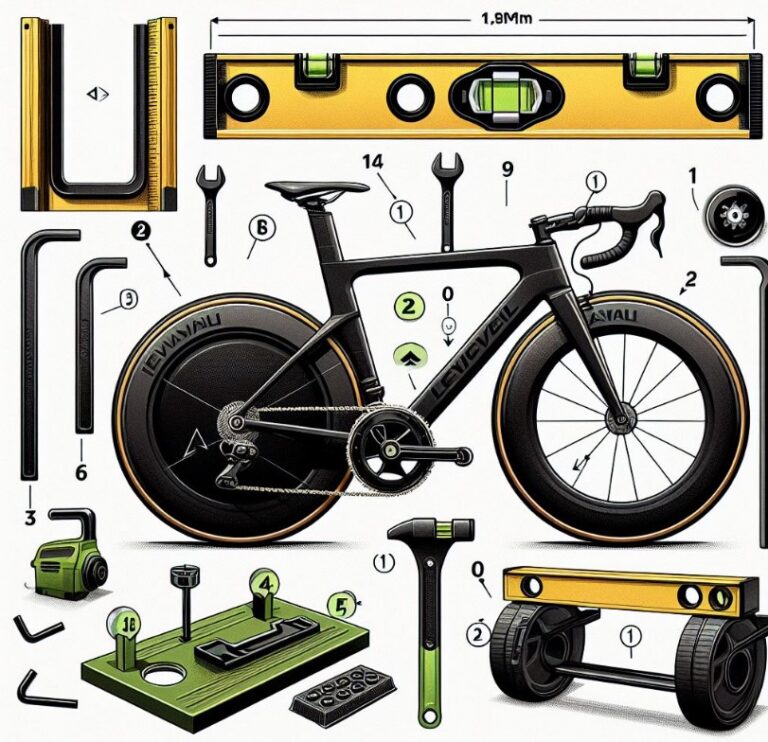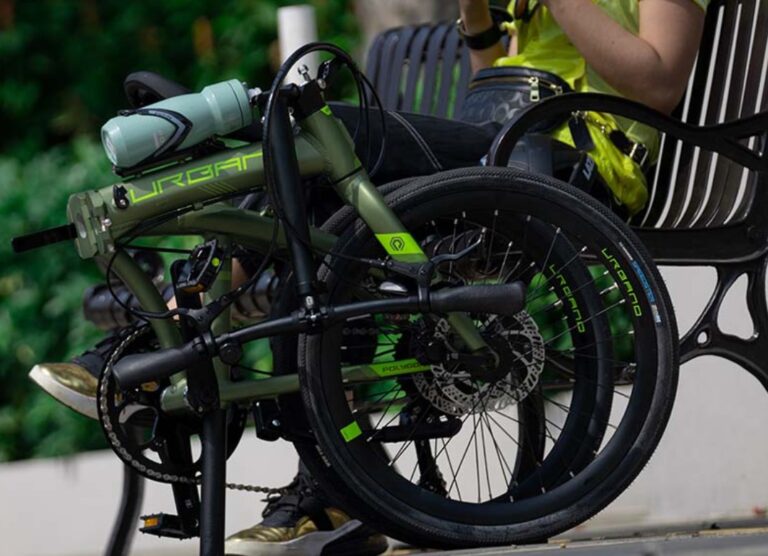How Should A Bike Jersey Fit? All You Need To Know
This article aims to provide information on How Should A Bike Jersey Fit? When selecting a bike jersey, the fit is crucial for ensuring comfort, efficiency, and aerodynamics. A well-fitting bike jersey can enhance your cycling experience, reduce wind resistance, and help in moisture management. It should complement your body’s shape and movements without restricting freedom of motion. Understanding the key aspects of how a bike jersey should fit is essential for every cyclist, from casual riders to seasoned professionals.
Key Takeaways
- A bike jersey should fit snugly to reduce wind resistance.
- It should be long enough in the back to cover your lower back while riding.
- The fabric should be breathable and wick away moisture.
- Sleeves should fit tightly, but not restrict movement.
- Pockets should be easily accessible and secure
How Should A Bike Jersey Fit?
A bike jersey should fit snugly, conforming to the shape of your body without being overly tight or restrictive, allowing for comfortable movement and effective moisture management while minimizing air resistance.

Understanding the Ideal Fit
The right fit for a bike jersey is crucial for both comfort and aerodynamic efficiency. A well-fitted jersey should hug your body closely with no excess fabric flapping in the wind.
The material should stretch adequately to accommodate your body’s movements without constraining them. This snug fit helps reduce air resistance and can actually improve your cycling efficiency.
In terms of length, a bike jersey should be long enough at the back to cover your lower back when you’re in a riding position. This is vital to prevent exposure and maintain comfort during long rides.
The front of the jersey, however, should be shorter to prevent bunching and provide ease while bent forward. These dimensions ensure that the jersey performs well under cycling conditions and remains comfortable and functional.
Material and Comfort
The material of a bike jersey plays a significant role in comfort and performance. A good jersey should be made from lightweight, breathable fabrics that wick moisture away from your body.
This keeps you dry and cool, even during intense rides or warm weather. Look for jerseys with mesh panels or ventilation zones to enhance airflow and improve moisture management.
Moreover, the fabric should offer some degree of stretch to ensure a snug fit without restricting movement. This elasticity should be balanced – too much stretch might lead to the jersey losing its shape, while too little could restrict your range of motion. The right material will complement the fit, enhancing your cycling experience.
Sleeve and Collar Fit
Sleeve length and fit are more than just a matter of personal preference; they affect your aerodynamics and comfort. For competitive cyclists, longer sleeves that end just above the elbow can offer aerodynamic benefits.
For casual riders, sleeve length is more about comfort and protection from the sun. Regardless of length, the sleeves should be tight enough to stay in place but not so tight that they dig into your skin or restrict movement.
The collar of a bike jersey should fit closely around your neck without being constricting. This helps in reducing drag and protecting your neck from sunburn. A properly fitting collar will lie flat against your skin without causing chafing or discomfort, especially when fully zipped.
Jersey Pockets and Features
Practical features like pockets and zippers are essential components of a bike jersey. The pockets should be accessible and secure, capable of holding essentials like snacks, spare tubes, and tools without the risk of them falling out. Most traditional bike jerseys have three rear pockets, but some may include additional zippered pockets for valuable items.
Zippers allow for adjustable ventilation; a full-length zipper can turn a jersey into an open vest on a hot climb. Reflective elements for visibility, grippers at the hem to prevent the jersey from riding up, and UV protection are other features to look for. These elements should enhance the jersey’s functionality without compromising fit or comfort.
Fitting for Different Body Types
Bike jerseys are not one-size-fits-all. Cyclists come in all shapes and sizes, and so should their apparel. Brands often offer a range of fits from relaxed to race, catering to different body types and cycling preferences.
A more relaxed fit might be preferable for leisure riders or those who prefer a less constrictive feel, while a tighter race fit is designed for performance and aerodynamics.
It’s important to try on different sizes and styles to find what works best for your body and your cycling needs. Remember, the right fit will feel comfortable and enhance your riding experience, not detract from it.
How Do I Know If My Cycling Jersey Is Too Big?
You can tell if your cycling jersey is too big if it fails to provide a snug fit against your body. A jersey that is too large will have a noticeable bunching of fabric, especially around the arms, shoulders, and waist. This excess fabric can create aerodynamic drag while cycling.

Additionally, the back of the jersey should not hang too low beyond the recommended coverage for the lower back. If the pockets at the back sag when items are placed in them, it’s a clear sign that the jersey is too big.
Moreover, if the jersey continuously rides up or moves around while cycling, this indicates a poor fit. A well-fitted cycling jersey should feel like a second skin, providing comfort without restricting movement or causing fabric to flap in the wind.
Where Should A Cycling Jersey Sit?
A cycling jersey should sit smoothly against your skin, with the front cut shorter to prevent bunching and the back longer to provide adequate coverage when in a forward-leaning cycling position.
The hem of the jersey should sit flat around your hips without riding up or bunching under your cycling bib or shorts. The sleeves should end near the mid-bicep or just above the elbow for short-sleeved jerseys, fitting closely to avoid air resistance.
The back of the jersey should cover your entire lower back to prevent exposure while riding. Proper positioning ensures comfort, aerodynamics, and protection from the elements while cycling.
How Tight Should A Cycling Jersey Be?
A cycling jersey should be tight enough to follow the contours of your body closely without restricting movement. The ideal fit is form-fitting, allowing the fabric to wick moisture away effectively and minimize air resistance.

However, it should not be so tight that it digs into your skin or makes it difficult to breathe comfortably. In professional cycling, jerseys are worn very snugly to reduce drag, but recreational cyclists might prefer a slightly looser fit for comfort.
The jersey must allow for a full range of motion, especially in the shoulders and arms, to maintain effective riding dynamics without feeling constrained.
Do Cycling Jerseys Stretch Out?
Cycling jerseys are designed to have some degree of stretch to accommodate the body’s movements while riding. Most are made from materials that allow for elasticity while retaining their shape over time.
However, the amount a jersey can stretch out depends on the fabric composition and the quality of the garment. High-quality jerseys made from advanced synthetic blends are less likely to stretch out permanently compared to those made from cheaper materials.
While some degree of loosening may occur over time, especially with frequent use and washing, a well-made cycling jersey should maintain its shape and fit for the duration of its intended lifecycle.
To minimize stretching, follow the care instructions provided by the manufacturer, typically involving washing in cold water and air drying.
Conclusion
The fit of your bike jersey plays a significant role in your cycling performance and comfort. It should be snug to reduce drag but not so tight that it restricts movement. The right jersey will cover your back adequately while riding and will be made of breathable, moisture-wicking material.
Remember, a properly fitting jersey not only enhances your cycling experience but also ensures safety and efficiency on the road. Choose wisely to ensure that your cycling adventures are both enjoyable and effective.
People Also Ask
Can I wear a bike jersey for other sports?
While bike jerseys are designed for cycling, they can be worn for other activities where moisture-wicking, breathability, and comfort are beneficial. However, they may not provide the same benefits or fit as sport-specific clothing.
How do I prevent my bike jersey from riding up?
Look for jerseys with grippers or silicone bands at the hem. These help keep the jersey in place and prevent it from riding up as you move. Ensure the jersey fits well; a jersey that’s too large is more likely to ride up.
Why do bike jerseys have pockets at the back?
The pockets at the back of a bike jersey are designed to provide easy access to essentials like snacks, spare tubes, and tools while riding. They are placed at the back to avoid interfering with your pedaling and to maintain aerodynamics.
Are there bike jerseys for different weather conditions?
Yes, there are jerseys designed for various weather conditions. Lightweight, breathable jerseys are ideal for warm weather, while thermal jerseys are better for cold conditions. Some jerseys also feature windproof and waterproof materials for riding in harsh weather.

Welcome to the exhilarating world of Matt Rex, a professional car racer turned renowned vehicle enthusiast. Immerse yourself in his captivating blog as he shares heart-pounding adventures, expert reviews, and valuable insights on cars, trucks, jets, and more. Fuel your passion for speed and discover the beauty of vehicles through Matt’s engaging stories and meticulous expertise. Join the ever-growing community of enthusiasts who find inspiration and expert advice in Matt Rex’s blog—a digital hub where the thrill of speed meets the pursuit of knowledge.







